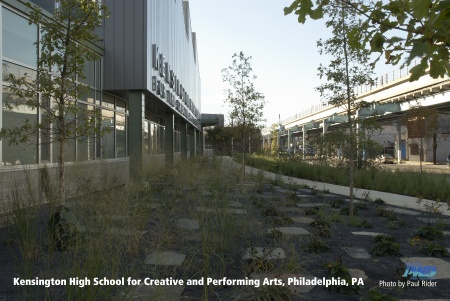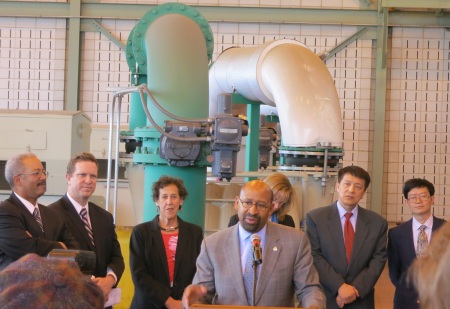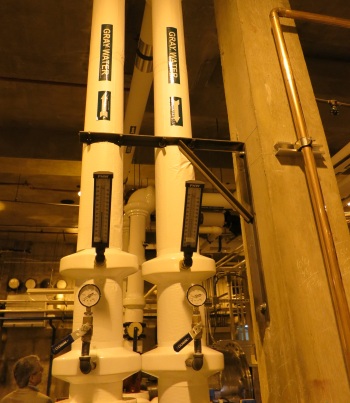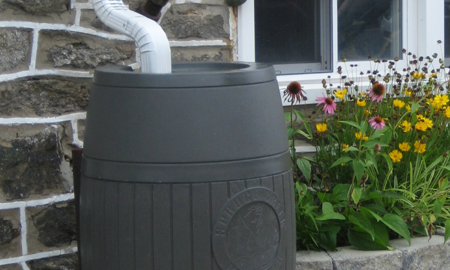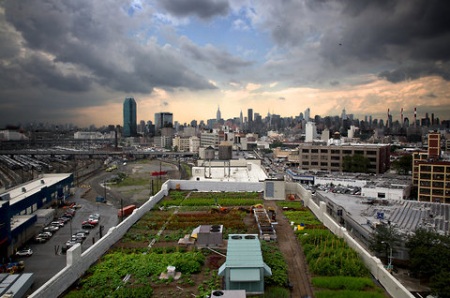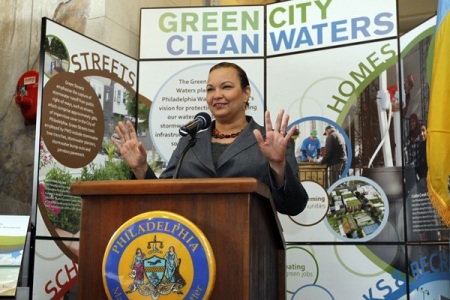
EPA Administrator Lisa Jackson (AP photo/Alex Brandon)
Yesterday's signing of an agreement between the EPA and the city of Philadelphia to collaborate as partners on the implementation of the Green City, Clean Waters plan drew plenty of media attention. A few selections below:
CBS Philly:
"It’s been nearly forty years since Congress passed the Clean Water Act, yet drinking water is still threatened due to aging infrastructure. That’s why Mayor Michael Nutter says Philadelphia is leading the nation by partnering with the EPA to install new green technology to protect the city’s water ways from pollution. 'We will transform a third of our paved surfaces, like streets, parking lots and sidewalks, with green areas that will capture rain water and allow for higher capacity from our existing systems.'”
Natural Resources Defense Council:
"The federal consent order, anticipated within the next several months, would make Philadelphia the first community to gain formal approval from EPA for using citywide investments in green infrastructure as a tool to comply with the Clean Water Act’s sewage overflow control requirements. How fitting that such an embrace of 21st century approaches to one of our nation’s most stubborn water pollution problems should come in this 40th anniversary year of Congress's adoption of the Clean Water Act!"
WHYY Newsworks:
"EPA administrator Lisa Jackson said she hopes Philadelphia can serve as a nationwide model. 'We want to see the benefits of green infrastructure taking hold in other large metropolitan areas, not just Philadelphia,' Jackson said at the signing. The EPA will help the city monitor water quality in surrounding rivers to measure the effectiveness of the new initiatives."
Bloomberg BNA:
"EPA will provide technical assistance to Philadelphia--including identifying and promoting higher-performing green infrastructure designs--and join forces in several demonstration projects, including greening a school's gardens and revitalizing a low-income neighborhood with green designs."
National Association of Clean Water Agencies:
“This agreement is the perfect example of what can happen when clean water agencies and EPA work together to use a common sense approach to solve our wet weather problems,” said Ken Kirk, executive director of NACWA. “We hope that this will serve as a strong example for both clean water utilities and regulatory agencies as they pursue similar solutions under EPA’s new integrated planning approach.”

